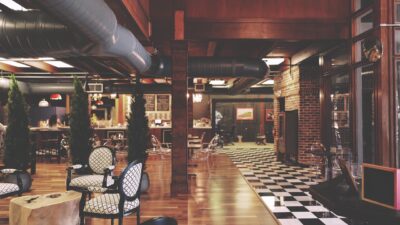Veneer Matching
Veneer matching is a type of veneer finish. Once sliced, wood veneer leaves are carefully chosen and matched to suit the individual project. Whilst each veneer leaf will differ, there will be a relationship between those that have been cut one after the other. This allows for a range of veneer matching options to be explored, with the aim of achieving a particular look.
What is veneer pattern matching?
Veneer pattern matching is a specialist art that requires a great deal of experience and attention to detail. High quality veneer matching results in exceptional appeal and perfect flow. It is particularly important in cabinetry design and panelling, where the wood grain must blend seamlessly across all the individual pieces.
Veneer matching can also be used to achieve striking effects, where contrasts are used to craft eye-catching creations, or to draw the eye to architectural features.
The art of veneer matching lies in the expert use of the natural repeat of the grain. It’s all about meticulously selecting and arranging each leaf to draw the most out of the particular species of timber, and to create beautifully decorative patterns.
What are the different veneer matching options?
There are a number of different veneer matching techniques, all of which produce different effects.
Book matching
The book match veneer pattern results in an effect that resembles an open book. Consecutive veneer leaves are selected, with alternate leaves reversed so that the opposite edges are brought together, creating a mirrored effect.
Book and turn matching
This technique is much like book matching, except alternate leaves are turned so that the grain flows in the opposite direction.
Slip matching
This process involves taking consecutive leaves from the same veneer, then joining them without turning over the alternate leaves. Instead of a mirror effect, a repeat pattern results, varying subtly across the panel. Slip matching works well with straight grain veneers.
Slip and turn matching
Slip and turn matching is an option that is quite like slip matching, except alternate leaves are turned so that the grain runs in the opposite direction.
Quarter matching
This technique works with the natural growth pattern of the tree from which the veneers are cut. Four pieces of veneer are book matched from side to side, and top to bottom. This is a good way to create larger veneer panels, and often used for species that produce smaller veneer leaves.
Random matching
Random matching involves mixing veneer leaves of the same species, but not necessarily from the same log. Some are turned over too, deliberately creating a random effect amongst the grain. This veneer matching technique is perfect if you are looking to achieve a purposely haphazard effect, where shades vary from dark to light and the grains flow in different directions.
Controlled random matching
Controlled random matching is a more measured form of random matching. Whilst there is still a mismatched effect, the shades and grains are carefully selected so that they fit the stipulated brief.
Mismatching
This is a veneer matching option that results in consistent colour and grain flow, however where the leaves are chosen from different logs, and sometimes turned over, a deliberate planking effect is achieved.
Related News

The Practical Advantages of Wood Veneers in Busy Commercial Spaces
From durability and cost-efficiency to design consistency and easy maintenance, wood veneers offer huge practical advantages in busy commercial interiors. Discover how they compare with solid wood – and why they’re the go-to choice for high-spec projects that need to perform under pressure.
Read More
Choosing the Right Wood Veneer for a Commercial Project: What Really Matters?
From hotel walls to apartment furniture, choosing the right wood veneer makes a big difference. Learn how to balance appearance, durability, budget and setting to get the best result – and why getting your veneering partner involved early can really pay off.
Read More
Natural Wood Veneer Matching for Eye Catching Design
The way veneers are positioned together can make a huge difference to the finished product. The overall look of the veneered product, whether a door, a piece of furniture or an entire kitchen, determines the technique that’s used. In general, to create a veneer with a first-class finish, a great deal of attention must be paid to the grain of the wood, the patterns of the natural material and the flow of the natural lines.
Read More
The Craft of Veneer Matching
Once the veneer cutting process is done, did you know even more expertise goes into creating the stunning results borne out in furniture and panelling? The next step in crafting the beautiful, flowing effect that veneers are so well known for is called veneer matching.
Read More
